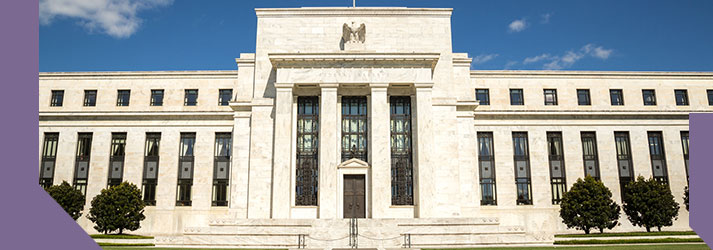US markets hit new highs
Despite some disappointing economic data, fresh disruptions caused by hurricanes, and ongoing tensions with North Korea, US equity indices reached fresh highs during the month, buoyed by a strong second-quarter earnings season. Elsewhere, President Trump supported a move to extend the US debt ceiling by three months.
- Investors were disappointed by some lacklustre unemployment data
- The Fed is still widely expected to increase its key rate this year
- Consumer price inflation was driven up by disruption to energy supplies
“The Fed intends to begin unwinding its US$4.5 trillion balance sheet in October”
Despite some disappointing economic data, fresh disruptions caused by hurricanes, and ongoing tensions with North Korea, US equity indices reached fresh highs during the month, buoyed by a strong second-quarter earnings season . In a meeting between President Trump and South Korea’s President Moon Jae-in, both presidents “condemned in the strongest terms North Korea’s continued provocations. Elsewhere, during the month, President Trump supported a controversial move to extend the US debt ceiling by three months. He also unveiled plans for a series of reforms to the US income-tax system.
Over the month as a whole, the Dow Jones Industrial Average Index rose by 2.1%, the S&P 500 Index rose by 1.9%, and the Nasdaq Index climbed by 1%. The best-performing S&P industry sector in September was energy, which performed strongly, followed by financials, industrials and telecommunications. In contrast, utilities, real estate, and consumer staples ended the month in negative territory.
The US economy added only 156,000 new jobs during August, compared with a monthly average of 176,000 so far this year. The Department of Labor also revised down the number of jobs added in July and June. The rate of unemployment in the US crept up from 4.3% to 4.4%; meanwhile, wages rose at an annualised rate of 2.5%. Consumer price inflation rose at an annualised rate of 1.9% in August, pushed up by disruptions to energy supplies caused by Hurricane Harvey. In comparison, the consumer price index rose by 1.7% in July.
The US economy posted second-quarter economic growth that was stronger than previously calculated. The country’s economy expanded at an annualised rate of 3.1% during the period, compared with earlier estimates – first of 2.6% and then of 3% - boosted by robust consumer spending. Although the recent spate of damaging hurricanes has imposed “severe hardship” on the communities affected, the US Federal Reserve (Fed) believes that they are unlikely to have a material effect on the economy’s course.
The Federal Open Market Committee (FOMC) maintained its key interest rate at 1-1.25% at their September meeting; however, policymakers confirmed that they expect to raise its key interest rate three times in 2018, twice in 2019, and once in 2020. An increase in December 2017 is still widely expected. The Fed intends to begin unwinding its US$4.5 trillion balance sheet in October, cutting up to US$10 billion each month.















